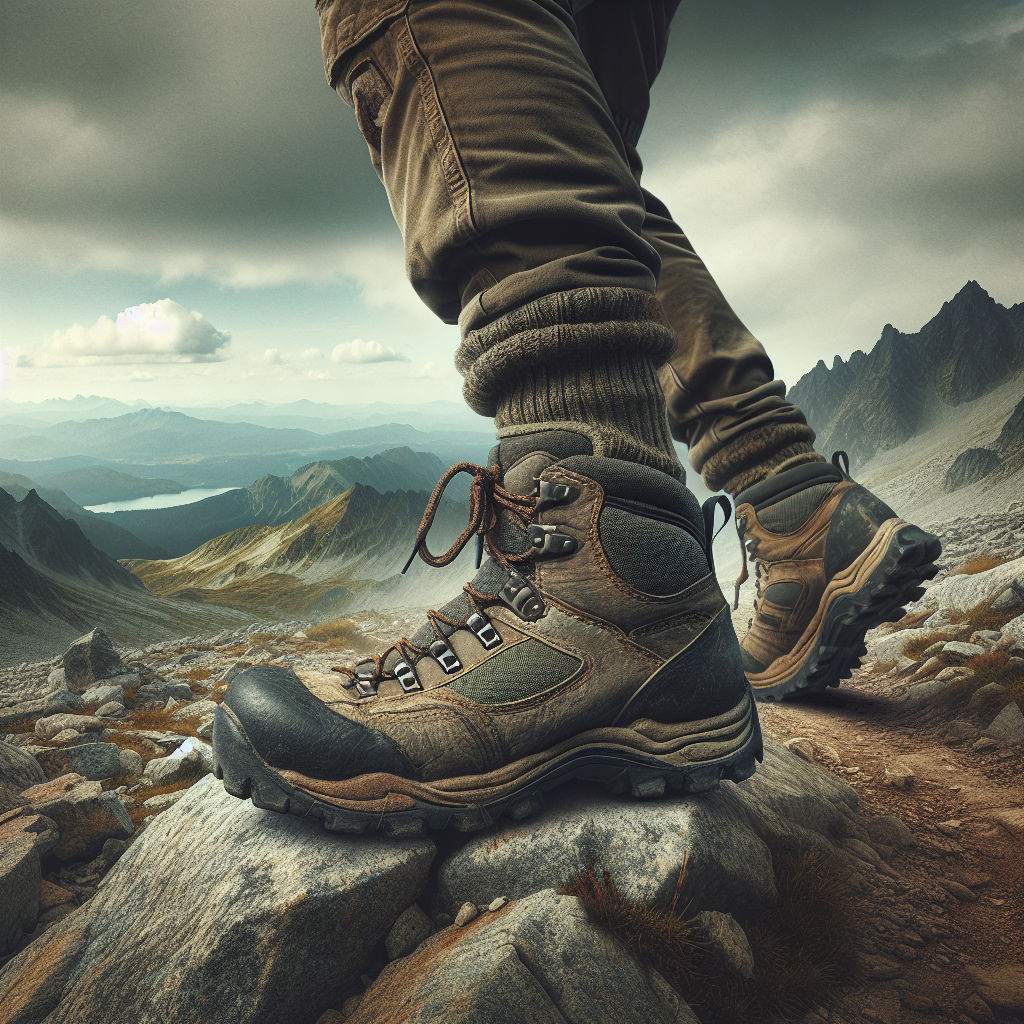Set aside the gym memberships and fancy fitness gadgets! “Hiking for Fitness: Combining Health with Adventure” is here to show you that there’s another way. This article will explore the surprising health benefits tied to the simple act of hiking. So, fit in your sturdy boots, pack your backpack, and prepare yourself for an unforgettable journey that merges vigour and thrill into one fulfilling endeavour. Discover how hiking can be more than just a leisurely pastime, moulding into an efficient workout regime while also allowing you to soak in the beauty of nature. Gear up for an adventurous ride that is as good for your waistline as it is for your soul.

Understanding the Implications of Hiking for Fitness
Hiking is an incredible way to not only see the beauty of the outdoors, but also to participate in a heart-pumping fitness activity. When you lace up those boots and hit the trail, you’re signing up for a full-body workout that promises a myriad of health benefits.
The Connection Between Hiking and Physical Health
When we’re talking about physical health, hiking has a lot to offer. It’s an aerobic activity, which means it strengthens your heart and lungs, and it’s a weight-bearing exercise, which helps keep your bones strong. It also helps to improve your balance, coordination, and overall strength. And because it’s an activity you can adjust to your own pace and ability, it’s suitable for people of varying fitness levels.
Mental Health Benefits of Hiking
In addition to being a powerful physical workout, hiking offers many benefits for your mental health. The tranquility of nature, the fresh air and quiet, can have a profound impact on your mood and mental health. It provides the opportunity to unplug from the constant buzz of modern life, reduce stress, and even combat depression.
Reducing Stress and Anxiety Through Hiking
Hiking, especially out in nature, can help you to manage stress by reducing anxiety and boosting your mood. The calmness of environment, combined with the physical exercise and concentration required to navigate a trail, can help distract your mind from everyday worries and anxieties.
Perks of Choosing Hiking as a Fitness Regime
There are a plethora of reasons to choose hiking as a fitness regimen.
Improved Cardio-Respiratory Fitness
Hiking on a regular basis can significantly improve cardio-respiratory fitness, including heart health and lung capacity. The challenge of navigating through different types of terrain engages your body differently than a session on the treadmill, strengthening your cardiovascular system in the process.
Muscle Strength and Endurance
Hiking works out all the main muscle groups in your body – such as your core, glutes, quads, hamstrings, and calves – increasing overall muscle strength. The uphill descents and descents engage different muscles, leading to improved endurance over time.
Weight Control and Management
Hiking can burn upward of 400 calories per hour, making it a great option for weight control and management. The variables of trail length, elevation gain and your packing weights can help intensify the workout, leading to higher calorie burn.
Increased Bone Density
This weight-bearing exercise helps strengthen bones and reduce the risk of osteoporosis. Each step you take while hiking puts stress on your bones, promoting growth and strengthening.
Essential Gear for Hiking
As wonderful as hiking can be, it’s important to have the right equipment.
Choosing the Right Hiking Boots
Your boots are arguably your most important piece of equipment. The right pair can keep you comfortable and safe on the trail, so you want boots that fit well, support your ankles, and can handle the kind of terrain you’ll be hiking on.
Selecting a Durable Backpack
Choosing a durable backpack that will carry your essentials (water, food, first aid kit, map, etc.) is crucial. Look for a pack with comfortable straps that distribute weight evenly across your shoulders and hips.
Weather-Appropriate Clothing
Dressing appropriately can make a major difference on your hike. Look for moisture-wicking clothing for summer hiking, and thermal, layered options for colder weather. Don’t forget waterproof garments for rainy conditions!
Navigation Equipment
Carrying and knowing how to use navigation equipment, such as a map, compass, or GPS, helps ensure you stay on the right path.
Staying Safe on Your Hiking Adventure
Whether you’re a beginner or a seasoned hiker, safety should be your topmost priority.
Importance of Hiking with a Buddy
Hiking with a buddy is not only enjoyable but it’s safer, too. If something goes wrong, There’s someone to help you out. Plus, you can keep each other motivated during those long treks.
Understanding Trail Difficulty Ratings
Trail ratings can give you a good idea of what to expect out on the path. They consider the trail’s elevation, length, terrain type, and other factors. Make sure to choose hikes that are suitable for your fitness level.
Stay Hydrated and Well Nourished
Remember to drink plenty of water and refuel with high-energy, nutritious snacks to stay energized throughout your hike.
First Aid Essentials for Hiking
A well-stocked first aid kit is important to handle minor injuries or emergencies that may arise. Make sure it includes bandages, tweezers, antiseptic wipes, and over-the-counter pain relievers.

Techniques to Hike Efficiently
Like any workout, learning proper technique is key to optimizing performance and preventing injury.
Walking Techniques for Uphill and Downhill Hiking
Uphill hiking requires leaning into the hill and taking smaller steps. Conversely, when going downhill, lean back slightly and take slow, controlled steps.
Conserving Energy on Long Hikes
To conserve energy, maintain a steady pace, take regular breaks, and stay well hydrated and nourished. Proper gear and clothing can also help reduce fatigue.
Breathing Techniques for Hiking
Breathing is crucial in hiking. Learn to breathe deeply from your diaphragm (not just chest) to increase oxygen intake, which helps reduce fatigue and increase stamina.
Combining Hiking with Other Outdoor Fitness Activities
Hiking is a versatile exercise that easily combines with other outdoor activities for a varied and complete fitness routine.
Information Premised on Hiking and Camping
Many hiking trails have associated camping grounds. Combining hiking and camping can be a fantastic way to turn your fitness routine into a mini adventure, offering the unique experience of waking up in the heart of nature.
Merging Hiking and Bird Watching
Hiking and bird watching are harmonious activities that combine exercise with the calm observation of nature. This combination can amp up the mental health benefits of your outdoor experience.
Hiking Paired with Outdoor Yoga
Outdoor yoga is a fantastic way to stress, increase body awareness, and achieve mind-body balance. Doing some yoga before, during or after your hike can enhance your experience and help you tune in to the nature around you.
Fishing While Hiking
If your hike leads you to a river or a lake, why not take a break and fish? Fishing can be a relaxing and rewarding activity that adds an extra layer of enjoyment to your hike.
How to Develop a Hiking Fitness Plan
Creating a hiking plan tailored to your fitness needs and goals is key to achieving and maintaining your overall health.
Determining Your Hiking Frequency
Depending on your fitness level, you might decide to hike daily, weekly, or monthly. Remember, consistency is key and it’s better to maintain a frequent, less intense routine than an infrequent intense one.
Setting Fitness Goals with Hiking
Perhaps you want to hike a certain distance, elevate your heart rate for a certain length of time, or reach a specific summit. Whatever your goals, hiking can be an effective way to achieve them.
Choosing Diverse Locations
Try to select different trails for your hikes. This will not only keep your routine interesting, but each trail will offer its own challenges to keep your fitness level improving.
Leveling Up Your Hiking Difficulty
As you progress, you should increase the difficulty of your hikes. Choose trails with more elevation or uneven terrain, or increase your speed or the weight of your pack. A progressive approach will help you continue to build strength and stamina.
Importance of Proper Nutrition for Hiking
Appropriate nutrition is crucial for maximizing performance and recovery during hiking.
Nutritional Needs Before a Hike
Before a hike, opt for a balanced meal with plenty of complex carbohydrates, some protein, and a healthy fat to provide sustained energy.
On-Trail Nutrition: What to Eat During Hiking
While hiking, snack frequently on high-energy foods like nuts, dried fruit, protein bars, and cheese.
Post-Hike Recovery Foods
After hiking, consume a balanced meal containing carbs to replenish energy stores, protein to repair muscle tissues, and fluid to rehydrate.
How to Stay Motivated for Consistent Hiking
Maintaining motivation throughout your hiking journey is essential to stick with it for the long run.
Tracking Your Hiking Progress
Use a fitness tracker or app to record distance, pace, and elevation gain. Tracking progress is a fantastic form of motivation.
Exploring New Trails
Keep your hiking routine fresh by exploring new trails. A new environment to explore fosters a sense of curiosity and can make your hikes more interesting.
Joining a Hiking Group
There’s strength in numbers. Joining a hiking group can give you a sense of community, making your workouts a social event to look forward to.
Listening to Music or Podcasts While Hiking
While it’s great to tune into the sounds of nature, sometimes hiking to the rhythm of your favorite music or listening to an interesting podcast can make your hike even more enjoyable.
Adapting Hiking to Different Seasons
Regardless of the season, you can adapt and modify your hiking routine to accommodate the changes in weather conditions.
Cold Weather Hiking: Tips and Precautions
In colder weather, layer clothing to regulate body temperature. Be mindful of slippery or icy paths, and consider using equipment like crampons for better traction.
Hiking in Warm Weather: Staying Hydrated and Avoiding Heatstroke
In warm weather, be sure to stay hydrated and avoid hiking during peak sunlight hours. Wear light-colored, breathable clothing to help keep you cool.
Precautions for Hiking During Rain
If hiking in the rain, waterproof gear is essential. Make sure to check the weather conditions before you leave, and always choose trails that are safe and navigable in wet weather.
So with these guidelines, you can turn your hiking adventure into a powerful fitness tool, allowing you to embrace nature while improving your physical and mental health. Happy trails!

